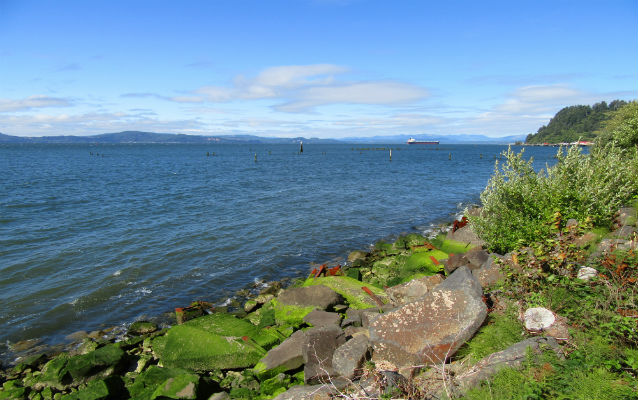Last updated: December 30, 2021
Place
Tongue Point

Lewis and Clark NHT Visitor Centers and Museums
This map shows a range of features associated with the Lewis and Clark National Historic Trail, which commemorates the 1803-1806 Lewis and Clark Expedition. The trail spans a large portion of the North American continent, from the Ohio River in Pittsburgh, Pennsylvania, to the mouth of the Columbia River in Oregon and Washington. The trail is comprised of the historic route of the Lewis and Clark Expedition, an auto tour route, high potential historic sites (shown in black), visitor centers (shown in orange), and pivotal places (shown in green). These features can be selected on the map to reveal additional information. Also shown is a base map displaying state boundaries, cities, rivers, and highways. The map conveys how a significant area of the North American continent was traversed by the Lewis and Clark Expedition and indicates the many places where visitors can learn about their journey and experience the landscape through which they traveled.
The expedition departed Station Camp on November 25, 1805, crossed the Columbia the next day, and paddled downriver along the southern bank. On November 27, they proceeded “around a verry remarkable point which projects about 1½ Miles directly towards the Shallow bay the isthmus which joins it to the main land is not exceding 50 yards and about 4 Miles around.” Clark named it “Point William” and wrote, “below this point the waves became So high we were Compelled to land unload and traw up the Canoes, here we formed a Camp on the neck of Land which joins Point William to the main at an old indian hut.” The main party remained while Lewis took a detachment on November 29 to scout for suitable winter quarters. The interim days were miserable with nearly continuous winds and rain, and “nothing to keep our Selves or Stores dry, our Lodge nearly worn out, and the pieces of Sales & tents So full of holes & rotten that they will not keep any thing dry.” The men explored the point and surrounding area while hunting for game. Lewis returned on December 5 to report he “found a good Situation and Elk Suffient to winter on.” The expedition departed two days later. They again camped in the area on March 23, 1806.
Located off US Highway 30 and now called Tongue Point, the peninsula comprises a US Jobs Corps Campus, US Coast Guard facility, commercial shipping yards, and a component of the Lewis and Clark National Wildlife Refuge. Public access is restricted, but the landform is viewable and interpreted from wildlife refuge public areas to the east, and the Astoria Riverwalk to the west. The “Tongue Point” name predated Lewis and Clark, given by British explorer George Vancouver in 1792.
